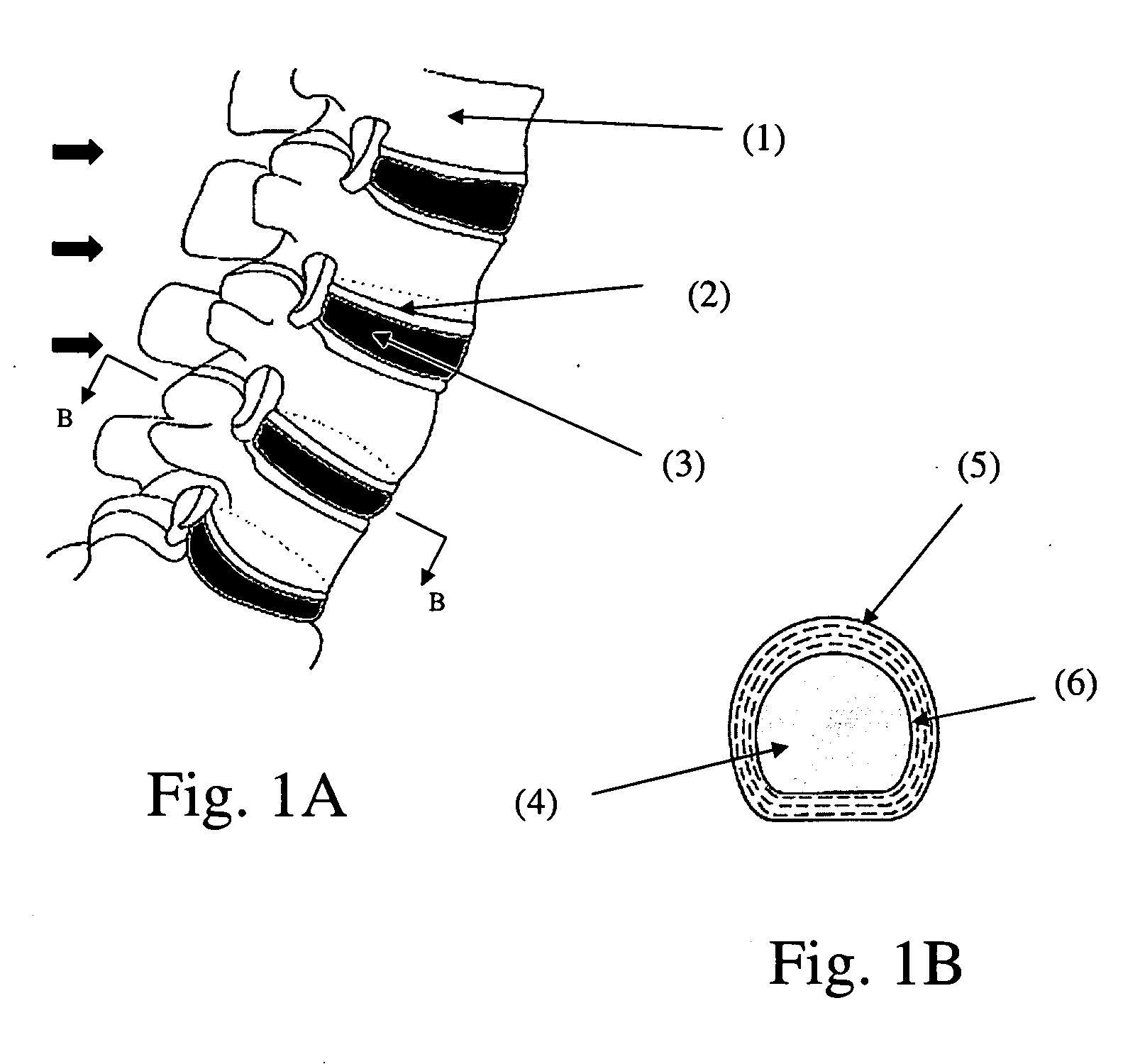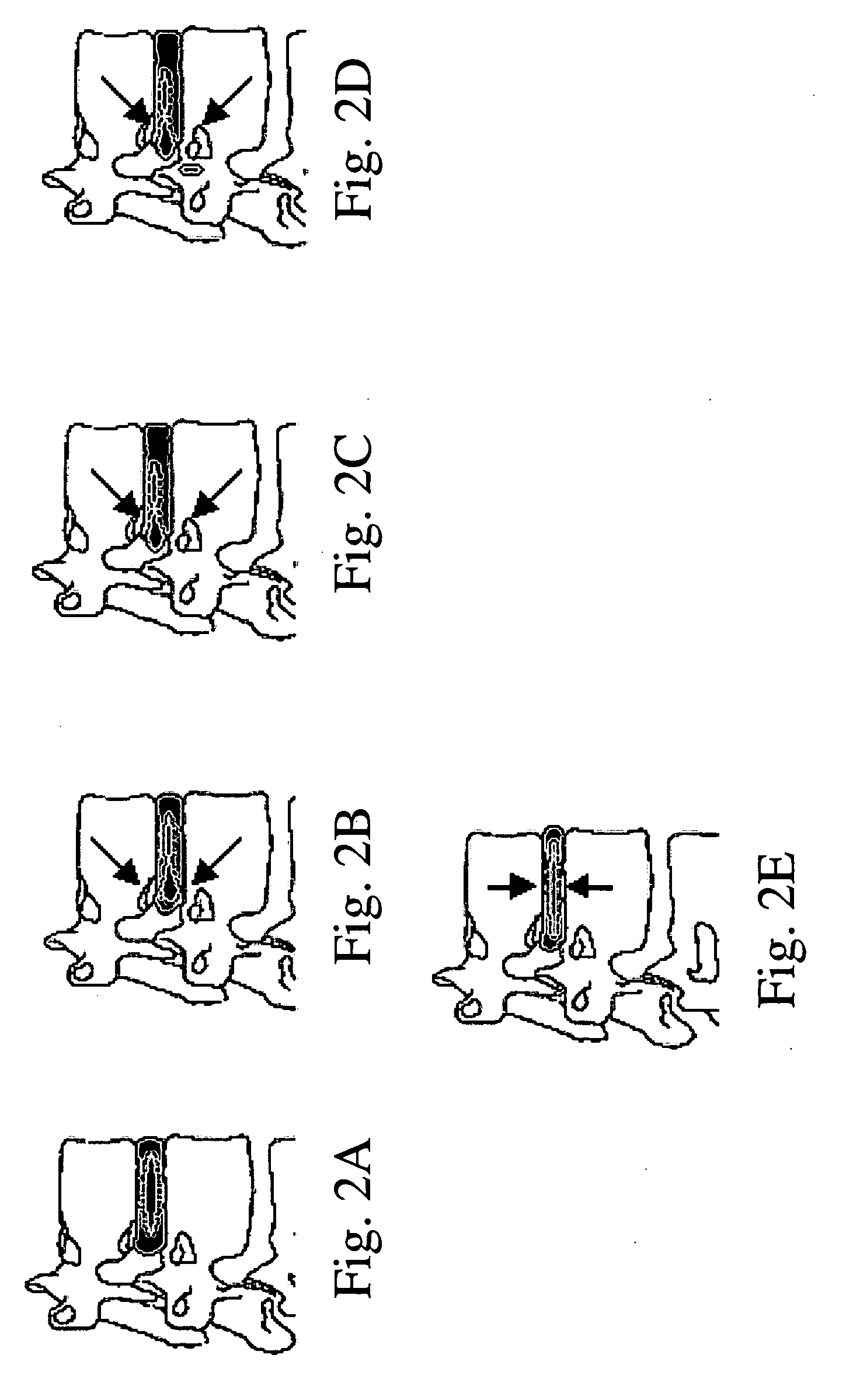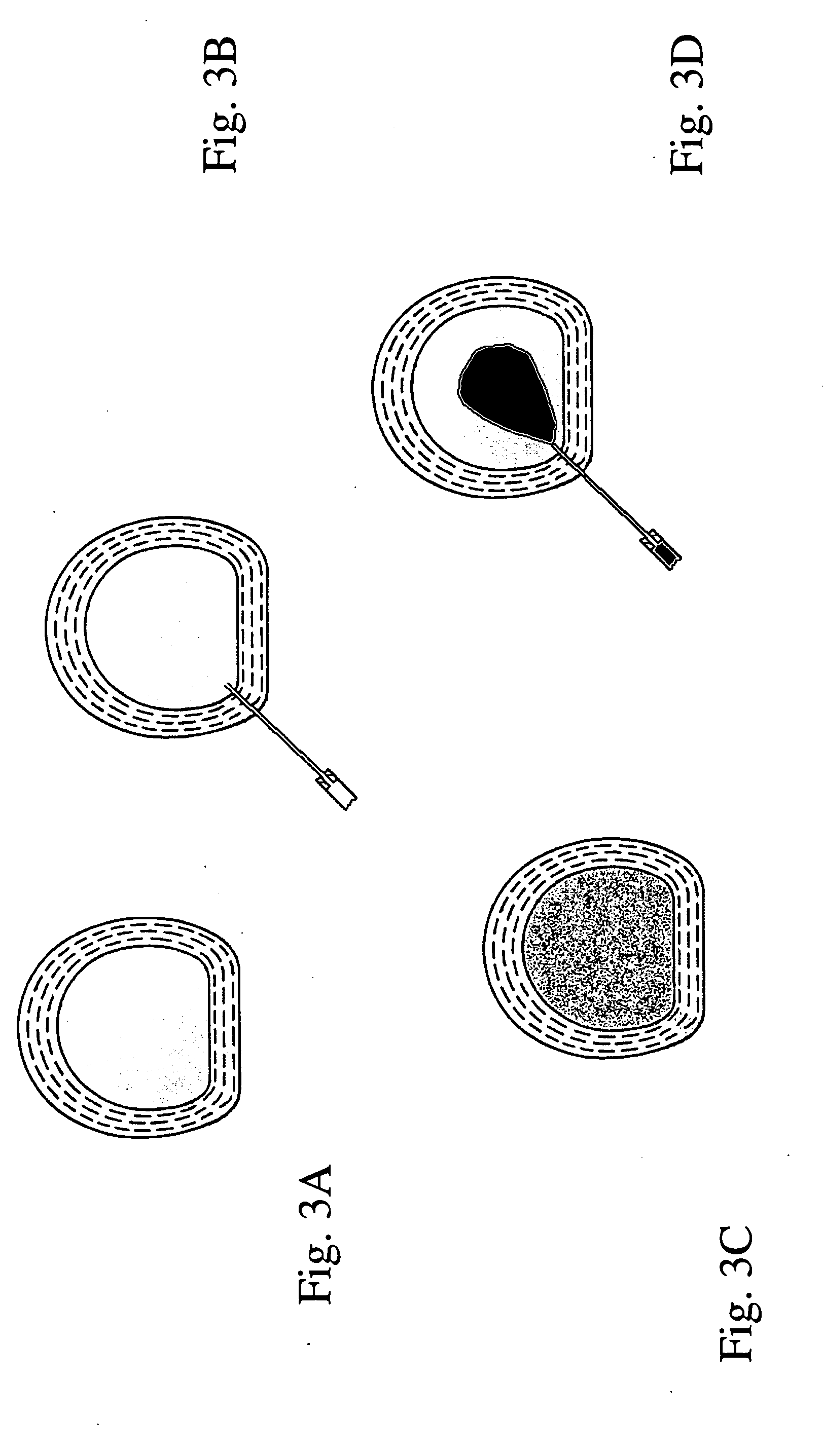Method for restoring a damaged or degenerated intervertebral disc
- Summary
- Abstract
- Description
- Claims
- Application Information
AI Technical Summary
Benefits of technology
Problems solved by technology
Method used
Image
Examples
example i
Effect of Composition on pH of Solution and Occurrence of Gelation
[0080]A mother acidic solution made of a Water / Acetic acid was prepared for all experiments. The pH of this mother acidic solution was adjusted to 4.0. High molecular weight (M.w. 2,000,000) Chitosan powder was added and dissolved in a volume of the mother acidic solution so as to produce Chitosan solutions having Chitosan proportions ranging from 0.5 to 2.0% w / v (Table 1). Table 1 reports the measured pH for the different samples.
TABLE 1Chitosan Aqueous Solutions and pH levelsChitosan conc. (w / v)0.51.01.52.0pH of Chitosan Sol.4.684.735.145.61
[0081]Glycerophosphate was added to the chitosan solutions and induces a pH increase. Table 2 shows the effect of glycerophosphate concentration on different chitosan solution. The concentration of glycerophosphate ranges from 0.065 to 0.300 mol / L. The chitosan / glycerophosphate solutions in glass vials were maintained at 60 and 37° C., and bulk and uniform gelation was noted with...
example ii
Preparation of Rapid In Situ Gelling Composition by Grafting mPEG on Chitosan in Mild Aqueous Solution for In Vivo Administration
[0083]This example relates to aqueous compositions containing chitosan and mPEG that rapidly undergo gelation via the formation of covalent and non-covalent linkages between both polymers. The methoxy PEG-succinoyl-N-hydroxysuccinimide ester (mPEG-suc-NHS), and methoxy PEG-carboxymethyl-NHS (mPEG-cm-NHS) were reacted with chitosan under homogeneous conditions in mild aqueous solution to produce hydrogel formulations.
[0084]The hydrogel formulations were prepared by dissolving 200 mg of chitosan, (with medium viscosity and a degree of deacetylation of 90%) in 9 mL of HCl solution (0.1 M). The resulting solution was neutralized by adding 600 mg of β-GP dissolved in 1 mL of distilled water. The p-GP buffering solution was carefully added at low temperature (5° C.) to obtain a clear and homogeneous liquid solution. The measured pH value of the final solution wa...
example iv
Preparation and Injection In Situ of Self-Gelling Chitosan-mPEG Formulation
[0086]A Chitosan-mPEG aqueous solution was prepared by mixing a chitosan aqueous solution (pH=6.6) and a methoxy-PEG-succinimide (mPEH-NHS). After 12 minutes of mixing, the chitosan-mPEG-NHS aqueous formulation was injected subcutaneously into Sprague-Dawley rats, using a hypodermic syringe and a gauge 18 needle. Rats were sacrificed periodically from 3 days and up to 56 days. The chitosan-mPEG-NHS gel materials were collected, fixed in appropriate buffer and histopathological analyzed. All animal procedures followed the rules of the Canadian Committee for Animal Care. FIGS. 7A and 7B show the histological slides of Chitosan-mPEG-NHS (FIG. 7A) and Chitosan (FIG. 7B) gel materials at 21 days implantation. Staining was Saffranin-O / Fast Green (magnification ×40).
[0087]Methoxy-poly(ethylene glycol) compounds were also evaluated in vitro in terms of cytotoxicity, by direct culture of adherent murine macrophage J77...
PUM
| Property | Measurement | Unit |
|---|---|---|
| Temperature | aaaaa | aaaaa |
| Temperature | aaaaa | aaaaa |
| Percent by mass | aaaaa | aaaaa |
Abstract
Description
Claims
Application Information
 Login to view more
Login to view more - R&D Engineer
- R&D Manager
- IP Professional
- Industry Leading Data Capabilities
- Powerful AI technology
- Patent DNA Extraction
Browse by: Latest US Patents, China's latest patents, Technical Efficacy Thesaurus, Application Domain, Technology Topic.
© 2024 PatSnap. All rights reserved.Legal|Privacy policy|Modern Slavery Act Transparency Statement|Sitemap



